Fences are essential in every home. They give privacy in our homes and keep properties in order. We researched fences and how you can have one that doesn't cost a lot.
According to designers, vertical fences don't cost a lot to install. On the average, it would cost about $12 to $27 per linear foot to install. Meanwhile, horizontal fences cost about $15 to $22 per linear foot. Thus, vertical fences are cheaper.
Keep on reading to know more about fences, both vertical and horizontal. We'll help you get your money's worth when you finally install your fence.
Vertical Fences Are Cheaper To Install
Vertical fences have been around for a long time. It has been a popular choice for homeowners. And the good thing about this kind of fence is the price. You read it right, you don't have to spend so much to install and maintain a vertical fence.
It's cheaper to have vertical fences because you don't need premium materials for them. Unlike the horizontal counterpart that needs pricey wood that won't sag for a long time, you won't have to worry about the vertical fence sagging after a few years. You have gravity on your side!
In addition, vertical fences are suited for most landscapes. If one part of the property is inclined, you can still install this type of fence.
How Much Would It Cost?
According to contractors, the average cost of building a vertical fence is around $12 to $27 per linear foot. The materials that you would use for vertical fences don't have to be high quality because they will not sag later on.
If you want to know how much it would cost for horizontal fences, the average cost per linear foot is about $15 to $22. Horizontal fences need more durable materials and posts that can support the weight for a long time.
The factors that affect the installation cost are the size of the yard, materials used, and property layout. If you use high-end materials, you can certainly expect to pay more.
Why Are Horizontal Fences Popular?
According to contractors, horizontal fences are more expensive to put up. Despite the cost, more homeowners also prefer to install this type of fence in their homes.
For one, you can boast of modern design when you have the horizontal fence. However, the modern design of your fence will only work if your house has a modern design as well.
Next, the horizontal design of your fence can emphasize the expanse of your property. This design also works best if you want to emphasize an interesting piece of your perimeter.
Most importantly, the horizontal design gives a unique appeal to your home. Since you don't see horizontal fences all the time, those who have them will surely generate interest because of their novelty.
Keep in mind that putting up horizontal fences will require a specific skill from your carpenter. You cannot just install this fence when you feel like it.
Can You Mix Vertical And Horizontal Fences?
Before you decide to put up a fence, you need to consider whether you are doing it for privacy or security.
If you want to have some privacy, then the vertical fence is the right design for you. The good news is that you can mix both horizontal and vertical designs, This way, you can achieve both the aesthetic and functional look that you want.
You can consult a designer on how best to go about mixing the two types. After all. some people might find it tacky to see two designs. But with the help of a designer, you can execute the design that you want.
How To Construct Your Fence
Now that you know what type of fence you want to use, it's time to start building. But before you start building, you need to get a permit first. Check which laws apply in your state.
When you apply for a permit, you will also need to measure the property where you plan to put up the fence.
Once you have these in order, your next steps are:
- Put markers where you want to start your construction
- Prepare the materials and tools to use
- Start digging the holes and putting up the posts
- Pour concrete on the base of the posts
- Put the support boards between the designated posts
- Nail the privacy board to the support boards
- Treat the fence with paint of water-proofing finish
Avoid These Mistakes When You Build Your Fence
To make your fence last longer, it's best to know which common mistakes you can avoid. We ask builders for their opinions about this.
The first is setting up posts outside your property line. Some homeowners put up posts on their neighbor's property, which might get them into trouble.
Check out "Gap Between Neighbors' Fences - What Homeowners Need To Know" to know more about property lines.
Next, not knowing where the utilities are. If you don't know where the utilities are buried, you might hit them accidentally when you set up your posts.
Third, not giving enough space for the gate. You should know that the gate is an important part of your fence since this is where you can enter and leave the property.
Fourth is not consulting a contractor. You won't get proper guidance if you don't find a suitable professional.
Finally, use low-quality materials for your fence. When you do this, you might have to replace your fence often since you cannot expect these to last long.
What Is The Easiest Fence To Put Up?
The good thing about wooden fences is that they are easy to install. Once you have your wooden panels, you can nail them to the post. There will be no need for you to install railing and pickets. Wooden pickets are also available in most stores.
Wood Types For Your Fence
Wood is the most common material for fences. And different kinds of wood will go well in your homes. We'll help you find the most durable material for your home.
- Cedar has a longer life than its contemporary. It doesn't decay easily, and it repels insects naturally. It costs around $15 to $30 per linear foot to be installed.
- Cypress also contains insect-repelling qualities. It can also last longer just like the cedar. For this type of wood, expect to pay $10 to $25 per foot for installation.
- Redwood is another durable fencing material. It is appealing to the eye. However, it is more expensive. It costs around $25 to $30 per foot for installation.
- Pine can be a go-to material if you are looking for cheaper material. Despite its cost, it is also durable. Pines make a good alternative to most fence materials. It would cost you $10 to $25 per linear foot to install this material.
- Bamboo is also gaining popularity because it is environment-friendly. This type of wood is more common in tropical countries. Some households even prefer using live bamboo for their fence. For this type of wood, you will spend about $20 to $30 per foot for installation.
Check out "15 Types of Bamboo Fencing" to learn more about bamboo fences.
What Is The Best Paint For Your Fence?
According to professional painters, acrylic latex paint works best for wooden fences. This type of paint works best for wood because it has a natural barrier against water.
The fence is subjected to different kinds of liquid: rain, melted snow, water sprinkler, or splash from the pool. By using latex on your fence, you will ensure that wood can withstand all these forms of liquid.
Another plus point about latex paints is that they are more flexible. Its surface area can expand or contract depending on the temperature.
Painters also recommend using a paint sprayer, since it is faster. You can cover more surfaces when you use a sprayer. Of course, you can hire a contractor if you want to save time.
Find acrylic latex paint on Amazon.
Color Ideas For Your Fence
Now that you know how to paint your fence properly, your next concern would be the color to use. We searched for unique ideas that you can use:
- bold black
- natural wood stain
- charcoal gray
- colorful pastels
- grey and green combination
- pale white
- two-tone gray
- earth colors
- plain white
- pink and blue
- blue and white
Final Thoughts
Fences provide both aesthetic and security to one's home. Wooden fences are also a popular choice because of their appeal. You can choose between vertical and horizontal fences to use.
If you want to know which of the two is cheaper to install, the answer is the vertical fence. You can save a lot because you don't need to use premium wood for your fence. Don't forget that vertical fences are also suited for most types of landscape.
Before you set up your fences, make sure to get the necessary permit. Plan accordingly, and get your tools and materials ready.

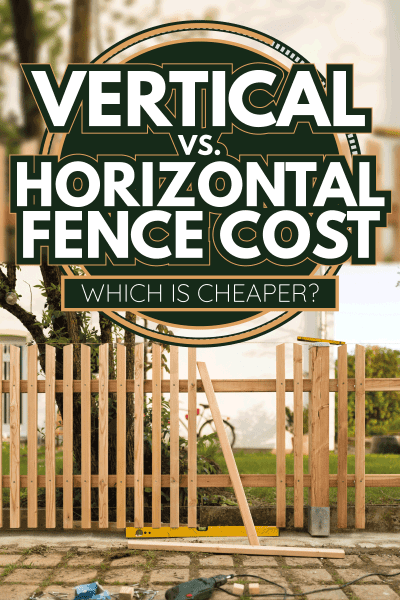

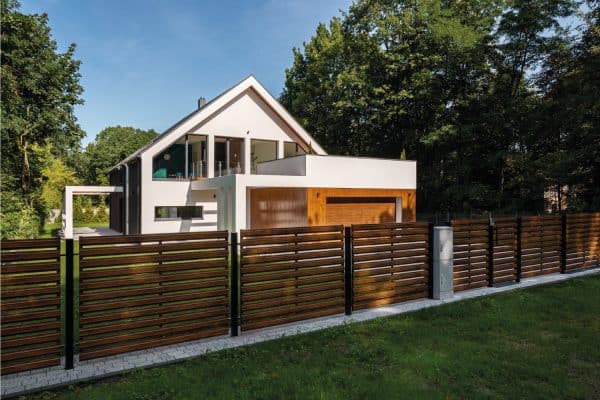

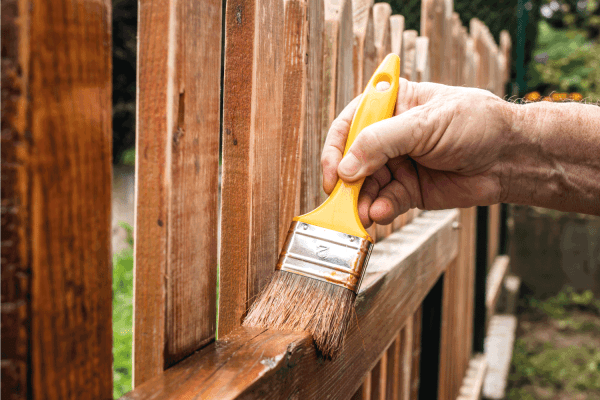

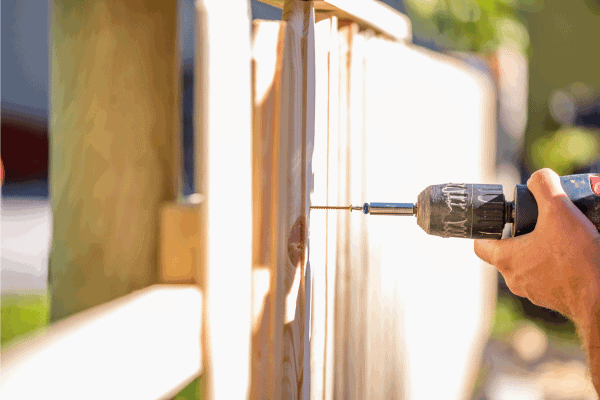
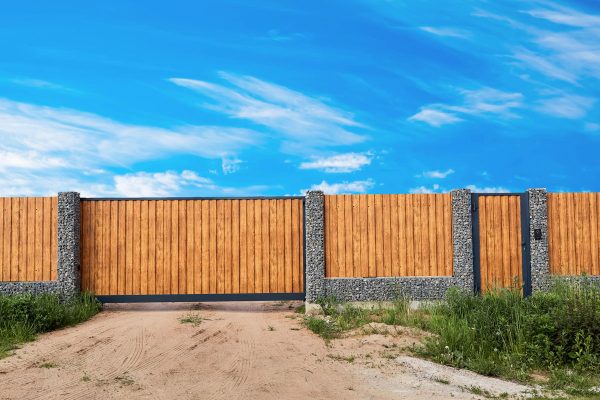
![Close board fence erected around a garden for privacy with wooden fencing panels, concrete posts and kickboards for added durability, Are Gravel Boards Treated? [And How Long Do They Last]](https://fencefixation.com/wp-content/uploads/2022/06/Close-board-fence-erected-around-a-garden-for-privacy-with-wooden-fencing-panels-concrete-posts-and-kickboards-for-added-durability-600x400.jpg)
![Wooden fence with green lawn and trees, Stepped Vs. Racked Fence Installation [Where & How To Use Each]](https://fencefixation.com/wp-content/uploads/2022/06/Wooden-fence-with-green-lawn-and-trees-600x400.jpg)